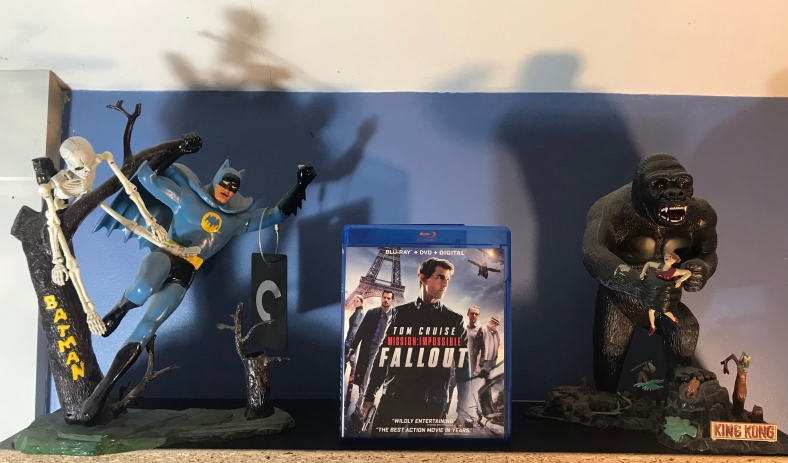By Casey Campbell
The newest film in the horror anthology series V/H/S drops today, October 6, so I went back and rewatched the second installment. I don’t think I need to say anything regarding the embarrassing third entry in the series, V/H/S Viral, and I shan’t be watching it prior to my 94 watch—or ever again.
Released in 2013, V/H/S/2 stands as the best in the series (so far, until I watch V/H/S/94). It managed to simplify the already basic premise of the first, while offering up some truly inspired horror set pieces from established directors in the genre. And, if you’re not aware of the basic premise, it’s a glorious marriage of found footage and anthology horror.
V/H/S/2 continues the trend of having a wrap around story replete with assholes. There was sexual deviancy and general delinquency in the first, and the second opens with a private investigator paid to film an affair and then using the blackmail to get more money from the cheater. The blackmailer and his accomplice (his girlfriend, if I’m not mistaken) abscond on another job in search of a college student that’s missing. A particularly gross line of dialogue is uttered about how the students mother has been calling, but the investigators aren’t worried and plan on finding and driving the kid around for a few days to wrack up expenses.
Once inside the home, the investigators look around and happen upon some V/H/S tapes. Like the first one, the tapes are viewed while spooky stuff happens in the periphery. It’s an extremely simple yet effective means of connecting the short films in a way that doesn’t seem too shoehorned or lazy. It’s also an eerie way to create some real atmosphere.
The first tape, “Phase 1 Clinical Trials,” is from Adam Wingard and Simon Barrett—one of my favorite director/writer teams in recent years. Barrett also wrote and directed the wrap around segments (as well as a recent release on Shudder called Seance which I intend to check out soon).
As the first of four tapes, I believe it to be well placed in the roster. It’s a ghost story with an exciting twist: it’s told from the first person. Having recently lost an eye, Herman (played by director Adam Wingard) receives an experimental eye that records everything—including when he “takes a shit.” It’s a fun and simple idea that offers many scares in a way that truly utilizes the perspective it’s in.
Since the tapes aren’t a huge time sink, and writing about spoilers is lazy, I’ll simply say that the tape is perfectly utilized as a short. It’s honestly a bit impressive in that way, as it manages to ramp up tension and scares in a short period while still ending on an unnerving note. Wingard and Barrett need to work together more often. I love what they create.
The second tape, “A Ride in the Park,” is exactly that: a ride in the park. Only with zombies. And it’s absurdly entertaining. Directed by The Blair Witch Project alums Gregg Hale and Edúardo Sanchez (or Eduardo Sánchez, IMDb has both) and written by Jamie Nash (who went on to write the story for WNUF Halloween Special).
A mountain biker with a helmet mounted camera comes across a distressed woman. She ends up turning into a zombie and bites the POV biker. He then turns and chaos ensues, only in a way that I hadn’t seen before. It’s shown from a zombies point of view which means you get right up close to the gore, including all the gross wet sloshy sounds of intestines being tugged from a torso and… well, you get it. The short is gross in the best ways and, like the previous entry, wears its brevity with pride.
Now comes the third tape and my favorite in the film: “Safe Haven,” written and directed by my favorite modern action directors Gareth Evans and Timo Tjahjanto. Go figure!
Outside of the context of this review, I could gush all day about these two directors. Evans blew me away and showed me what real action photography and choreography could look like in The Raid and its sequel, while Tjahjanto’s recent Netflix action film The Night Comes for Us proved to be an ultra violent hell fest of similarly styled filmmaking (I didn’t love it on my first watch but on my second I was hooked).
“Safe Haven” shows a documentary crew interviewing the head of a religious cult, and eventually being invited to see what the compound is like. As with everything else these directors have done, the results are bloody and brilliant. This one in particular is difficult to put into words without giving too much away. The pacing is impressive, what with how they develop the characters just enough, and how the underlying psychological terror of the cult begins to rear its awful head.
This tape is what cemented V/H/S/2 as a great gross out horror movie to watch with friends. It’s utterly insane, disgusting, and delightful. All I can say is that I’m highly looking forward to Timo Tjahjanto’s next entry in the franchise, with his new tape in 94.
The final tape had a tough enough job following up the brilliance of “Safe Haven,” so I’m not sure how to judge it on its own merits. It’s called “Slumber Party Alien Abduction” and sure enough, aliens intrude upon a slumber party.
The idea is fine, the execution is fine, it’s all just fine. Nothing about this final tape is particularly excellent and it even ends with a really grim image (beware animal lovers). Written by Jason Eisener and John Davies, and directed by Eisener, “Alien Abduction” follows several children and a few teenagers on an obnoxious evening when the parents are out of town. There are pranks and shenanigans and all sorts of things I didn’t think I’d have to sit through during a gory horror movie.
Some imagery stands out as creepy and the aliens look nightmarish enough, but the entire thing never feels like it needs to have been filmed—the mark of an amateurish found footage film. Mind you, it’s not terrible, but leaves a bad taste in your mouth after a few really clever shorts.
V/H/S/2 is a blast, even with one unwieldy short thrown in the batch. It’s also a mere 96 minutes, which makes it a quick and easy watch.
Here’s hoping the new one can reach these heights!









